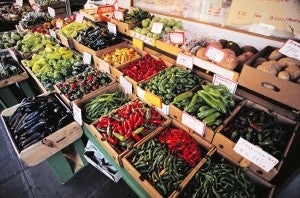High Pricing Keeps Tulare County Ag #1
Tulare County Ag Tops all Counties
By Laurie Greene, Editor
The 2014 crop report from Tulare County indicates another record-setting year. Marilyn Kinoshita, Tulare County Ag Commissioner, noted how well the dairy industry did, “30% of our overall value was actually milk, so dairy is incredibly important to our county. They had some good prices for most of the year. That is what brought up the value of milk to $2.5 billion. It is a significant increase over the prior year. A little bit more yield, but it is the price that kicked up well over two billion dollars.”
Tulare County Ag sales topped $8 billion in 2014, and the dairy industry overcame significant pricing obstacles to contribute to the County’s success.
Kinoshita continued, “We’ve got several classes of milk, and California producers are at a disadvantage to the other folks in Wisconsin or Nebraska, or wherever milk is produced. California producers feel singled out. They have their own system by the Secretary of Ag, so they have lobbied to get some hearings to be put under the federal system of pricing. California is lower than the federal standard.”
Citrus sales also played an important role in setting the new sales record, she said, “They had a really good year and went up considerably. So there is our number three crop. We are the nation’s number one citrus county. When our growers are having a good year, it benefits the county. We have 71 citrus packing sheds in our county and all the major juicing plants in California are right here.”
Kinoshita also mentioned some of the ways that citrus has become the number three crop, “It is sort of supply and demand, and great marketing. We ship to 90 different countries around the world. A portion of our production is exported.”
In 2014, livestock in general was up 40%, which also made an impact on sales in Tulare County, “You’ll find when you go to a grocery store that steaks, chicken, and turkey all cost more. So all of our species had an increase in price per unit for this crop reporting year.”



















